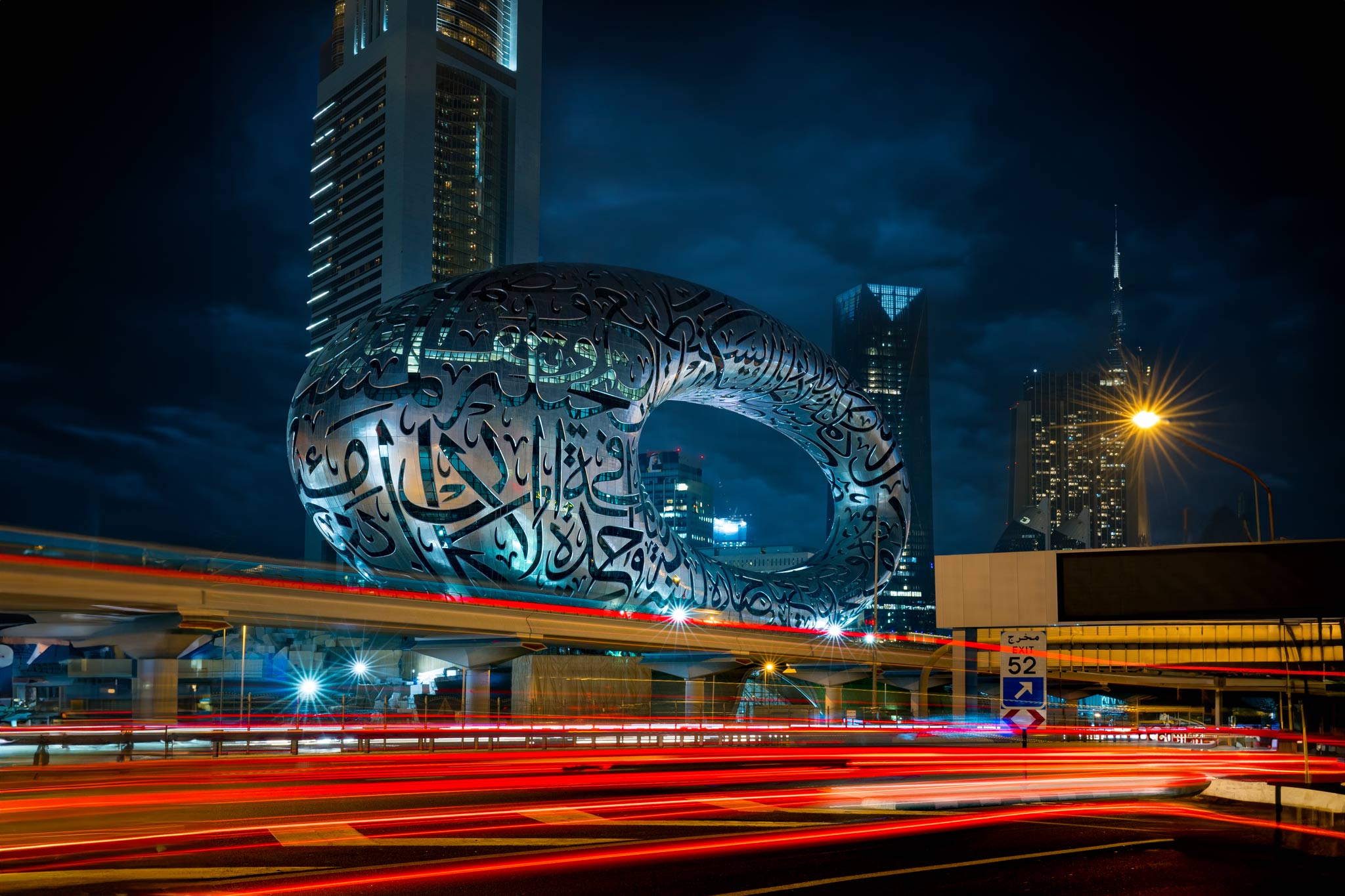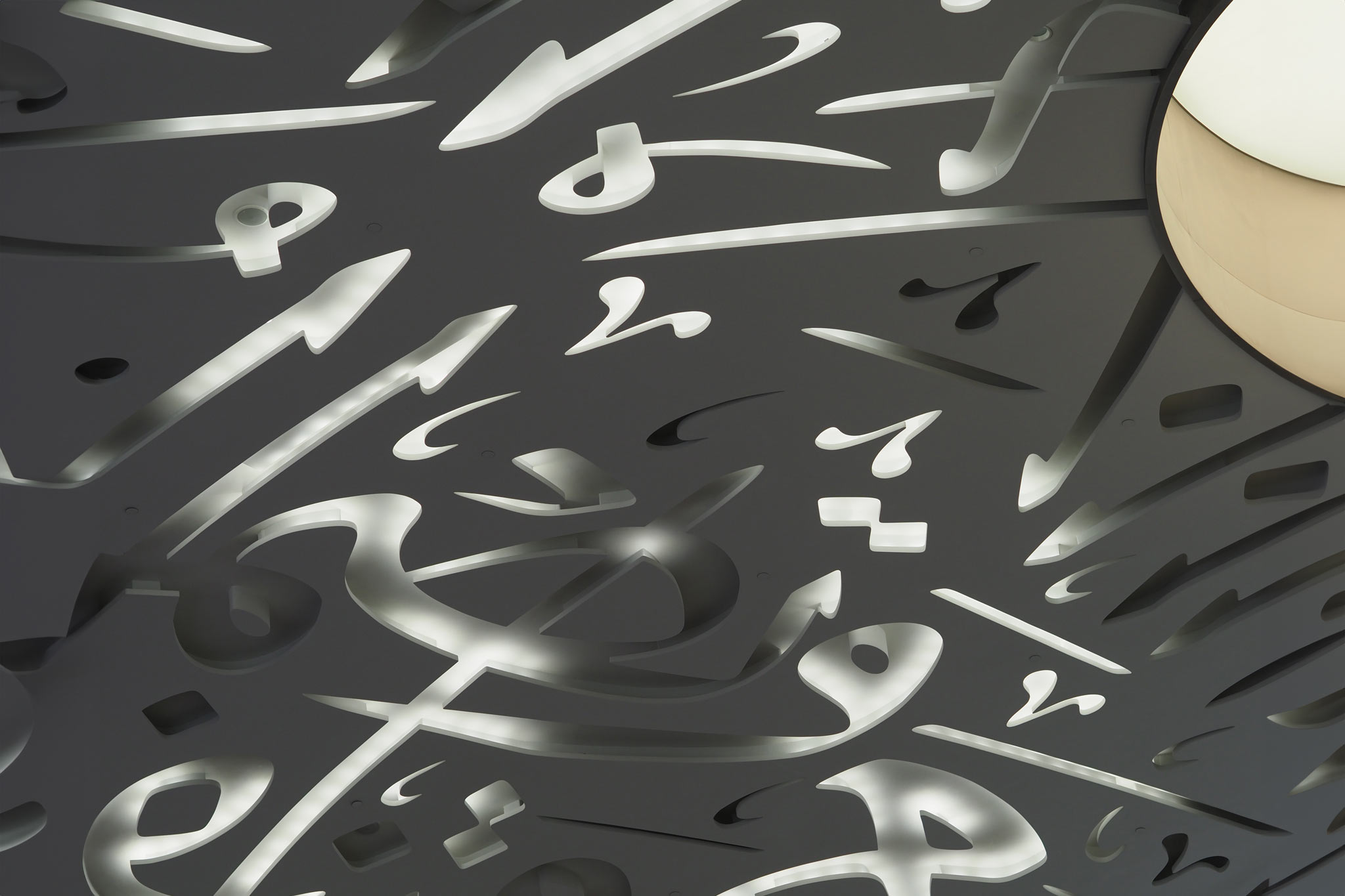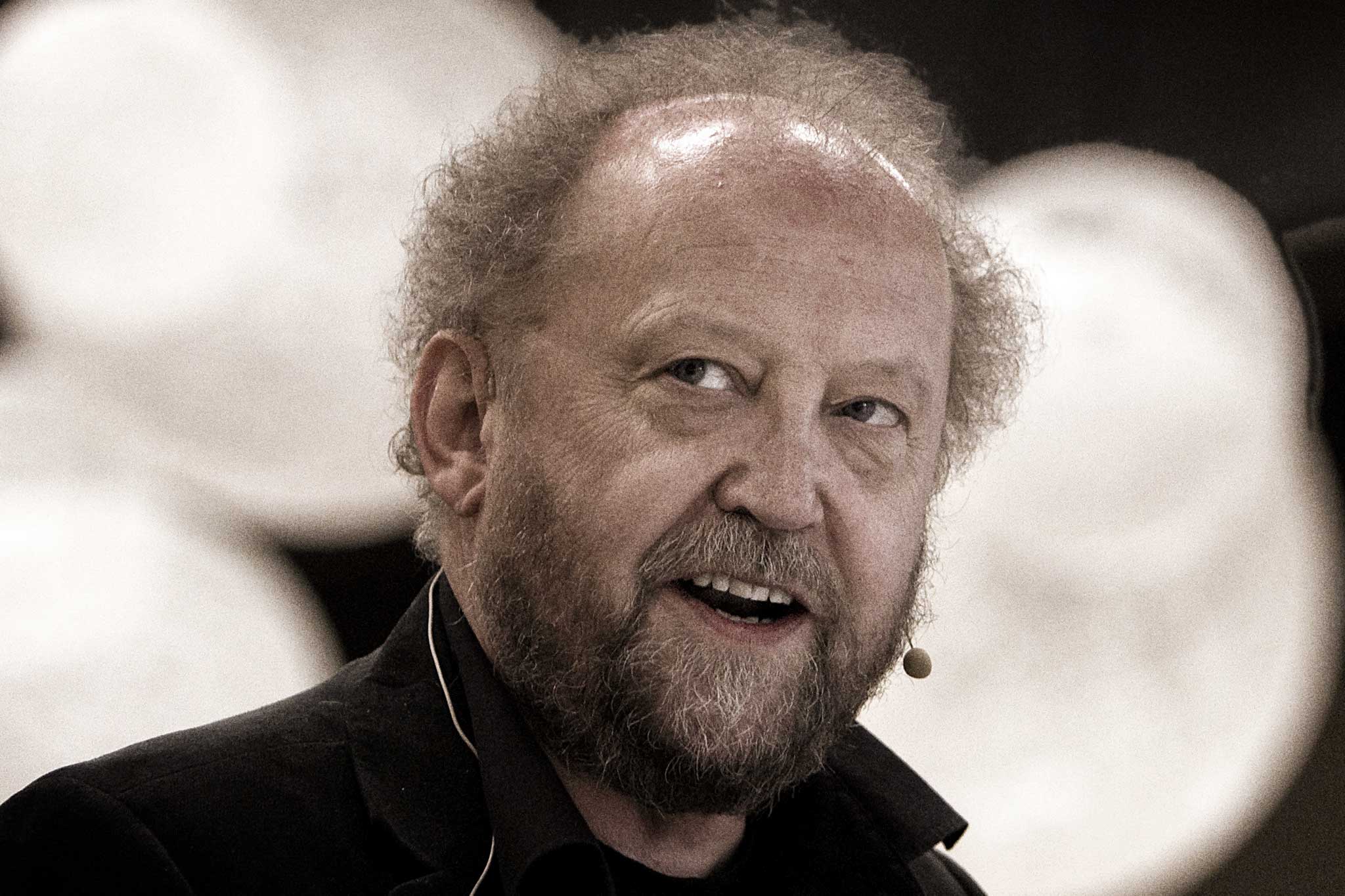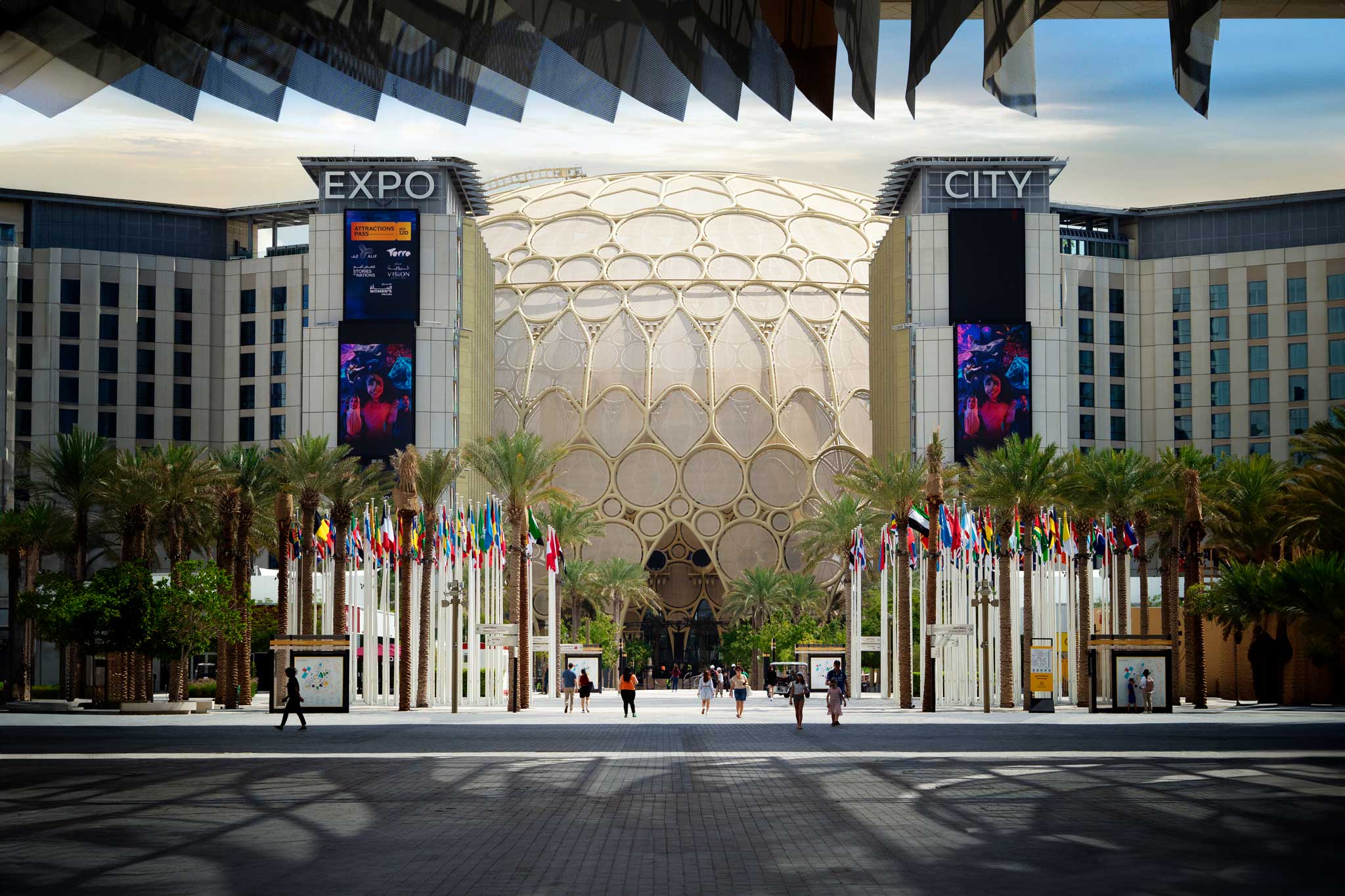We have often passed by The Museum of the Future in Dubai’s financial district. Since its opening in February 2022, the building has been a global landmark and a sought-after venue for business events. The museum’s architect is South African Shaun Killa, Killa Design, known for always focusing on sustainability in his projects.
The 77-metre-high building is covered in Arabic calligraphy and is supported not by the traditional columns but by a steel diagrid, with a facade of 1,024 steel panels. Over 30 per cent of the museum’s energy comes from pure solar energy via solar cells.
The pillar-less construction is an architectural icon and a significant addition to the world’s science, architecture, and art development. The Museum of the Future has been described as one of the most beautiful buildings on Earth, and we couldn’t agree more. What’s also exciting is that it feels much bigger inside than you might think when you see it from the outside.
The inscriptions on the exterior make us want to learn how to write Arabic letters; they look like art. The calligraphy fonts, created by the Emirati artist Mattar bin Lahej, embody the building’s overall vision of knowledge. They consist of three quotes by Sheikh Mohammed bin Rashid Al Maktoum:
“We may not live for hundreds of years, but the products of our creativity can leave a legacy long after we are gone.”
“The future belongs to those who can imagine it, design it and implement it. It is not something you await, but rather create.”
“Innovation is not an intellectual luxury. It is the secret behind the evolution and rejuvenation of nations and peoples.”
One of the museum’s goals is to be a centre of bold ideas and boundless ambition, where visions, experiences and concepts have been designed and launched to accelerate research-based scientific development in the Arab world. Furthermore, the museum embodies humanity’s boundless creativity, innovation and imagination. Its forums, talks and exhibitions aim to highlight, discuss and explore humanity’s latest discoveries and those yet to be made.
The idea is also to play a supportive and motivating role in the region and the world by investing in creative minds, ideas, projects, initiatives, studies, and research that add value to knowledge and science. The museum is an incubator for visionaries, talents, and futurists at both regional and global levels and serves as an all-encompassing laboratory for future cities, technologies, and concepts. The experience is entertaining as well as educational.
The museum’s elevator is a distinctive feature and an immersive experience. Its innovative design reflects the idea of commercial space travel and introduces visitors to the exciting concept of visiting space in the near future. It can’t be described as anything other than quite a lift-off with an Airbus 380, and it feels like the rocket you are in is being pushed out of the museum and into space.
“The Museum of the Future is like a time machine that shows what life could be like in 2071”
Large event spaces and a 420-seat auditorium on the premises make the house feel spacious and include a state-of-the-art open area for about 1,000 people. Moreover, an interactive auditorium for congresses, conferences, lectures, and workshops accommodates over 300 people. The museum’s seven-floor storeys use artificial intelligence and human-machine interaction technologies. The technology helps create interactive experiences that challenge the audience to question the future of people, cities, societies, and life on Earth and in outer space.
The Museum of the Future is like a time machine that shows what life could be like in 2071. It is also a platform to showcase and test innovations from the world’s 39 leading technology companies and a venue for partnerships with universities, international research institutes, advanced research courses and specialised workshops. In addition, there are five thematic exhibitions to explore:
- The Orbital Space Station Hope, OSS Hope, is your gateway to the future of space, 600 kilometres above Earth. Here, you can imagine a world where people don’t just live and work on Earth but in space. This exhibition takes you into a whole new world and challenges your imagination. It is like being in a vision coming to life.
- The Heal Institute is where you learn about nature. A large screen shows the DNA of the Amazon; the forest is a digital recreation of a rainforest in Leticia, Colombia, with footage filmed in the rainforest. The rainforest ecosystem simulator helps guests better understand nature and their responsibility towards it. The institute also has a DNA library of over 2,400 species, introducing biodiversity like never before.
- Al Waha is a futuristic spa allowing visitors to explore themselves in a world stimulating their senses. Visitors embark on an intimate journey in an environment where health and wellbeing are at the centre and where they can easily disconnect from technology. The environment helps people meditate, reconnect with themselves, and restore their natural balance.
- Tomorrow today. The exhibition explores the contrasting ways technology can shape the future by helping solve societal and environmental challenges. It features concepts, prototypes and current products focusing on five areas: waste management, environment, food security, agriculture and urban planning.
- Designed for children under ten, Future Heroes encourages young minds to make discoveries about themselves and the world around them. The Future Heroes floor features a range of educational and fun activities that focus on future-proof skills such as curiosity, creativity, confidence, communication and cooperation.
Not surprisingly, the Museum of the Future is a popular venue for business events, so bookings for different types of meetings should be made well in advance.






